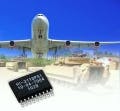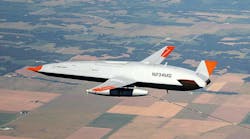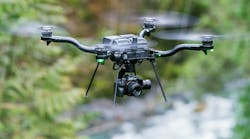Designers of rugged radios for military communications are focusing their efforts on improving the warfighter network, while at the same time creating radio communications technologies that are more efficient in terms of size, weight, and power.
“Today it is all about the network,” says Joe Miller, director of Joint Tactical Radio System (JTRS) Ground Domain for General Dynamics C4 Systems in Scottsdale, Ariz. “Current operations demand better communications and warfighters need more bandwidth across secure seamless pipes. Networks must self form and auto route communications all without the benefit of fixed infrastructure -- no cell towers. Real-time communications and situational awareness are critical, and current operations in rugged remote regions of the world require new networking technologies.
“However, the network is just an enabler," Miller continues. “The value lies in applications that run on the network. Applications provide information and intelligence that improves safety, increases effectiveness, and multiplies lethality.”
The funding trends out of the U.S. Department of Defense (DOD) also are pushing toward a more efficient network, says Steve Marschilok, president of Department of Defense Business at Harris RF Communications in Rochester, N.Y. “The market and funding trends for military radios in the DOD are transitioning to wideband requirements as there is a pent-up demand for more and more data at the lowest echelons on the battlefield. Much like the commercial world, data intensive applications like biometrics, intelligence, surveillance, and reconnaissance (ISR), video, logistics are driving an increasing need for bandwidth.”
Falcon III AN/PRC-117G
Harris is meeting this demand with their Falcon III AN/PRC-117G, which is “the first wideband tactical radio that is both compliant with the JTRS Software Communications Architecture and NSA Type-1 certified,” Marschilok says. This radio has been deployed by the U.S. Army and other services to mission areas.
“The current challenge is to develop effective human interfaces at the soldier level to disseminate this intelligence without adding significant size and weight,” Miller says.
“From a product perspective, our military customers have placed emphasis on size, weight, power, and cost (SWAP-C) for new products,” says Earl Johnson, vice president of business development at ITT Communications Systems in Fort Wayne, Ind. “Radios of the future will be required to have an open systems architecture and run various waveforms as dictated by the operational environment. Tactical ground forces are seeking satellite communications on the move (SOTM) and beyond line of sight (BLOS) capabilities for company and below units.”
ITT’s Soldier Radio Waveform (SRW) meets this demand and brings “the network to battalion and below units,” Johnson continues. “We are developing smaller handheld radio capabilities that will exceed requirements for the JTRS Rifleman Radio. Our NexGen Iridium products such as the RO Tactical Radio are providing BLOS capabilities to deployed forces in Iraq and Afghanistan.
“In addition, we have tested and demonstrated a SOTM with our GNOMAD system that brings on the move capability using a low profile SATCOM antenna, Johnson adds.
Smartphone on the battlefield
“The Army has also expressed strong interest in bringing smartphone capabilities to the battlefield based on the commercial model of smart phones using various applications,” Johnson says. “This is a low cost, open system solution leveraging commercial technology.”
However, as “new radios become cheaper and the military move to commercial type smart phones, the ruggedization required maybe relaxed in the future,” Johnson says.
“Military standards for ruggedization really have not changed, nor have techniques to achieve ruggedization,” Miller says. “That said, what is new is miniaturization. The Joint Tactical Radio Systems (JTRS) Handheld, Manpack, Small Form Fit (HMS) leverages technologies from the commercial cellular industry to achieve increased capabilities in packages significantly smaller than current radios.
“The smallest HMS radio, used on unmanned aerial vehicles (UAVs) and sensors, weighs approximately 8 ounces, he continues.
“Ruggedization does become a challenge as density of electronics increases and size decreases,” Miller says. “Special techniques are required to manage thermal dissipation and unique power savings modes are necessary as well. Within the HMS radio, individual circuits can be shut down for fractions of a second all to conserve battery life and reduce thermal loading.”
Company listing
EFJohnson Technologies, Irving, Texas, 972-819-0700, www.efjohnsontechnologies.com
Ericsson, Plano, Texas, 972-583-0000, www.ericsson.com
General Dynamics C4 Systems, Scottsdale, Ariz., 480-441-3033, www.gdc4s.com
Harris RF Communications, Rochester, N.Y., 585-244-5830, www.rfcomm.harris.com
ITT Communications Systems, Fort Wayne, Ind., 260-451-6000, www.cs.itt.com
Motorola, Schaumburg, Ill., 847-576-1000, www.motorola.com
Thales Communications, Clarksburg, Md., 240-864-7000, www.thalescomminc.com



